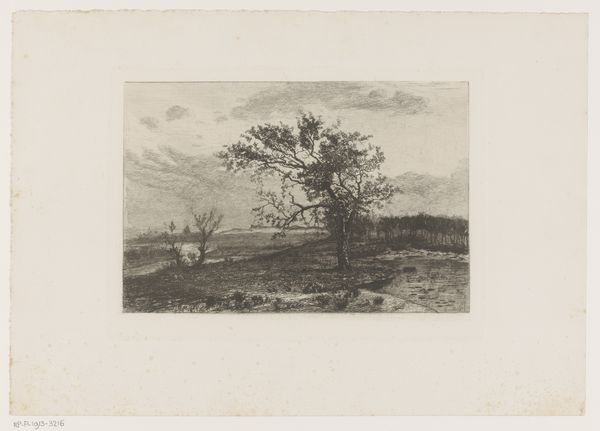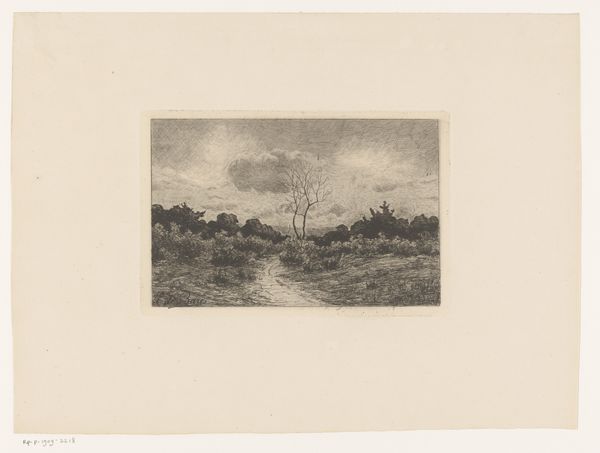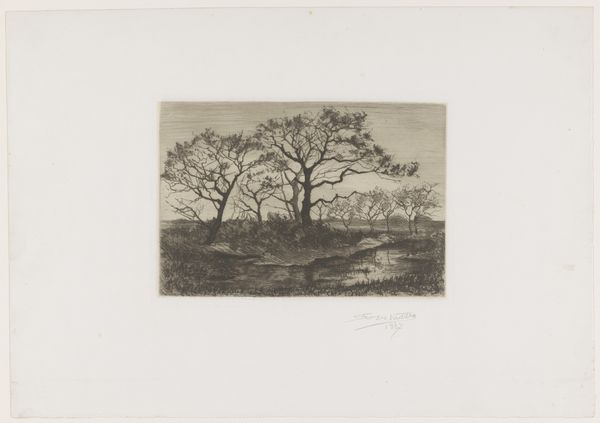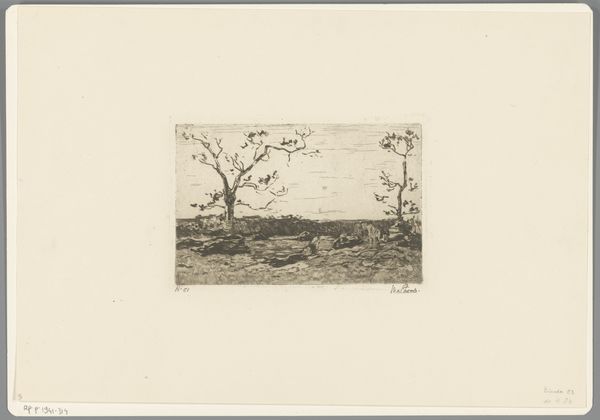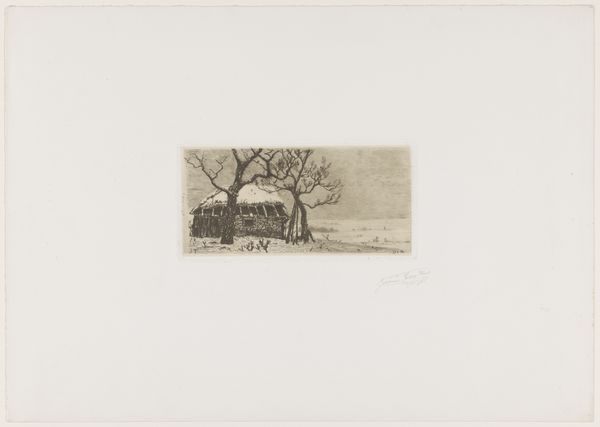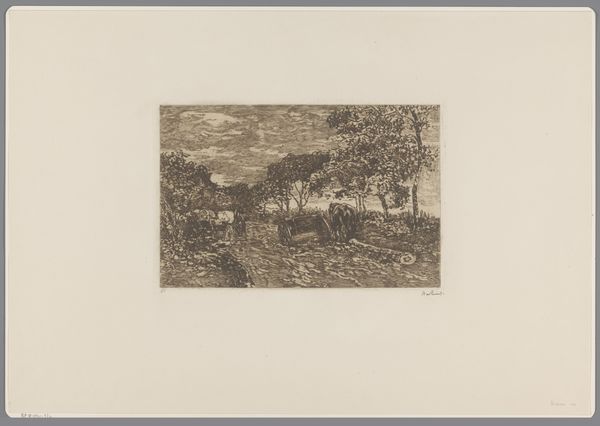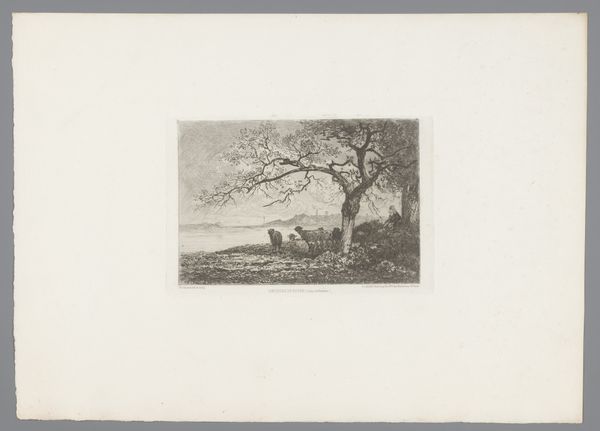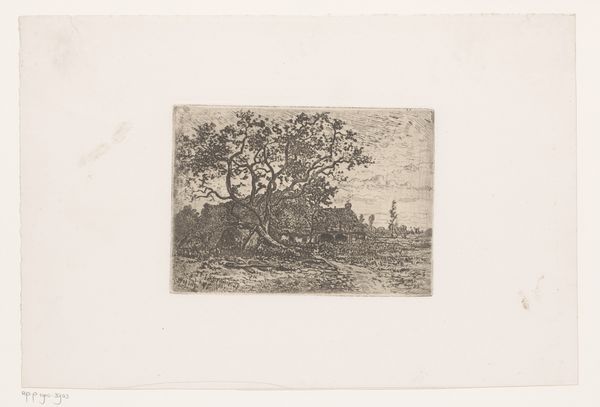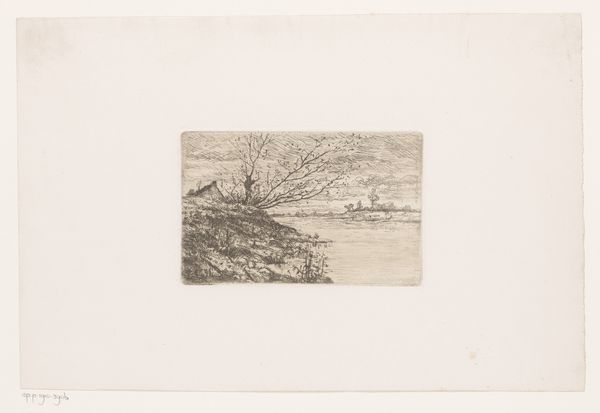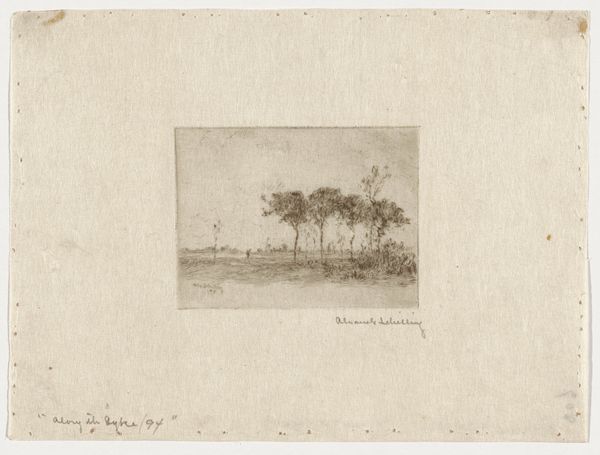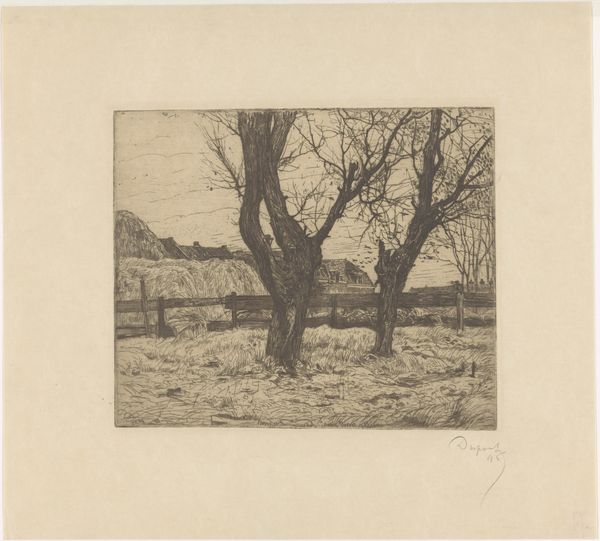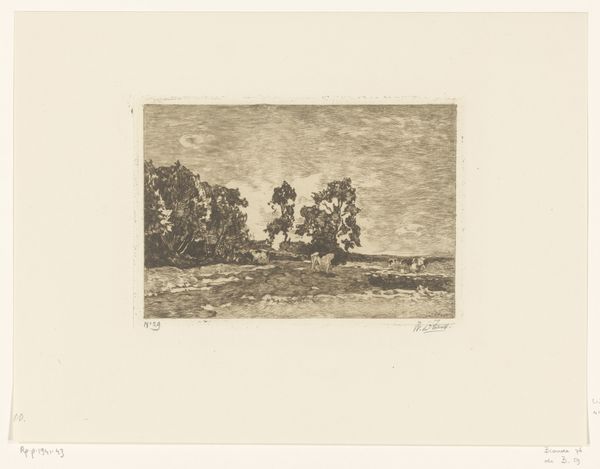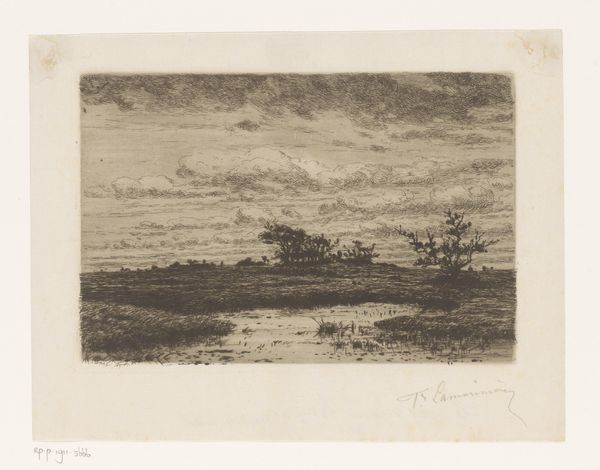
Dimensions: height 200 mm, width 300 mm
Copyright: Rijks Museum: Open Domain
Curator: This is "Landscape with Bare Trees and Woodcutters" by Willem de Zwart, dating back to approximately 1896. It's an etching, showcasing de Zwart's masterful ability with the printmaking process. Editor: There’s an undeniable stillness to this landscape. A muted palette adds to the solemn feel. I'm drawn to the textural contrast of the trees against what looks like a vast, empty sky. Curator: Let's consider the social context: etching as a reproductive medium was becoming increasingly accessible at the time, yet here de Zwart elevates it through sophisticated tonal variations. Notice how the artist’s labor emphasizes the labor of the woodcutters, creating a connection between artist and subject. Editor: That's an interesting perspective, but for me, it's more about what those bare trees symbolize. They speak to the cyclical nature of life and death, a motif often associated with landscape art throughout history. Curator: Perhaps, but I'm compelled to consider the materials themselves. The very act of biting the plate with acid to create these fine lines speaks volumes. This image likely circulated amongst a growing art market. Who was consuming these landscapes, and what did they signify within the home? Editor: I think there's something to be said about the cultural understanding of trees as symbols of resilience in harsh conditions, and that’s a narrative we have seen echo down centuries. The act of the woodcutters reminds the viewer about humankind’s dependency on our surrounding environment and raw material for societal growth. Curator: So you're suggesting that the symbolism and the act of its production cannot be separated? One is tied to its societal interpretation and cultural narrative, as is related to a shared symbolic human and contextual language, while the other speaks to tangible labour of natural transformation for societal use? Editor: Precisely! The artist, the woodcutters, the bare trees—all interconnected threads in the fabric of our symbolic comprehension. Curator: Well, considering both our points of view really illuminates different entryways into appreciating de Zwart’s print. It’s far more layered than initially meets the eye. Editor: Yes, exactly—examining the symbolic landscape and understanding that shared experience allows for a deeper insight into not only this artwork, but human culture at the time as well.
Comments
No comments
Be the first to comment and join the conversation on the ultimate creative platform.
